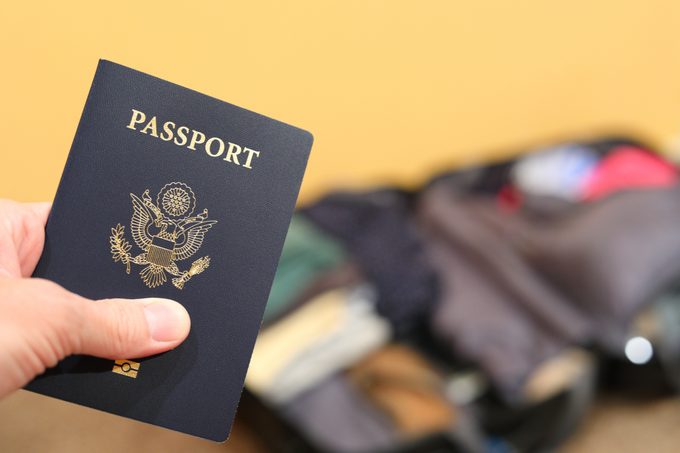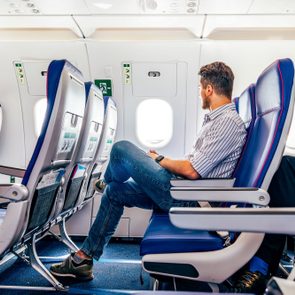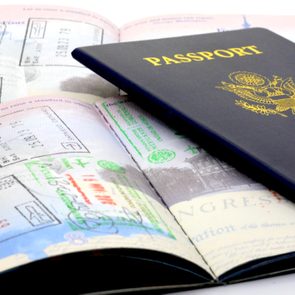Whatever you do, don't store your passport here—you might regret it

This Is the Worst Place to Store Your Passport When Traveling

Picture this: You’re halfway through your dream vacation when—bam—your passport is gone. Maybe it was snatched by a swift biker in the streets of Europe, or perhaps it was quietly lifted from your pocket in a crowded market. Either way, your relaxing trip is about to turn into a frantic hunt for embassies and emergency replacements.
Sound dramatic? It happens more often than you think. According to the U.S. State Department, over 300,000 American passports are lost or stolen every year. That’s a lot of ruined trips.
But here’s the good news: You don’t have to be part of that statistic. We’re breaking down the absolute worst place to keep your passport while traveling, along with the smartest spots to store it instead. To get the lowdown, we spoke with Katy Nastro, a travel expert and spokesperson for the Going travel app, who shared her top tips for keeping your passport safe.
Want to avoid a vacation nightmare? Read on to find out the one place you should never stash your passport and get expert advice for stress-free travel.
Get Reader’s Digest’s Read Up newsletter for more travel tips, tech, humor, cleaning and fun facts all week long.
Where is the worst place to store your passport?

The worst place to store your passport while traveling is, hands down, your back pocket—or any pocket at all, really. Why? It provides easy access for pickpockets.
And yes, you’ll still encounter pickpockets when traveling around Europe, according to a 2024 Quotezone report. The site’s travel-insurance-comparison experts scoured reviews of the top five tourist destinations in the 10 most visited European countries to determine how often visitors mentioned pickpocketing in their reviews.
Italy topped the list with 478 reported incidents per million visitors, according to the report. France followed with 251 mentions of pickpocketing, while Spain and Germany tied, each with 111 mentions per million visitors.
Nastro explains that passports are easy targets because their shape and size make them instantly recognizable. Pickpockets know exactly what that little book sticking out of your bag is. “Keeping it in a bag in plain sight is never the best move,” she warns.
As someone who’s traveled extensively across Europe and the U.K., I’ve heard countless cautionary tales—even locals aren’t immune to quick-fingered thieves. Bikers snatching phones or hands slipping passports from pockets happens in a flash, turning a dream trip into a logistical nightmare.
Where is the safest place to store your passport while traveling?
As Nastro puts it, “a hotel safe is still the default for many people, and it’s often the safest option—pun intended.” Just be sure to double-check that the safe is functioning properly. If the lock isn’t secure, call the front desk immediately.
However, hotel safes aren’t foolproof. Not only are they the first place a thief might check, but travelers often forget they’ve left valuables inside. Nastro admits she’s fallen victim to this herself. Her solution? “I always keep a shoe or toiletry bag in the safe the night before departure,” she says. “You never pack just one shoe, so seeing a lonesome shoe is a great reminder to grab its partner—and your passport.”
Where is the safest place to keep your passport when traveling with it?
If you have to travel with your passport, stash it in an internal pocket or small bag that connects securely to your main bag for better security, Nastro says. “Some people even go as far as using money holders you wear under your clothes,” she adds, highlighting the importance of keeping your passport out of easy reach.
Wondering why you’d have to travel with your passport in the first place? Nastro notes that some travelers in the European Union keep their passports with them to take advantage of VAT tax refunds when shopping or to use them as a backup form of ID. However, she explains, “in many parts of Western Europe, they’ll usually specify if an activity requires a specific form of ID, and a driver’s license may be accepted instead.”
That’s not always the case in other parts of the world. In countries like Japan, for instance, local laws may require you to carry your passport at all times. Failing to do so could lead to issues if you’re stopped by authorities. To avoid confusion, Nastro suggests checking the entry and ID requirements for your destination.
What do you do when your passport is lost or stolen while traveling?
If your passport falls victim to theft or gets lost, replacing it before returning to the United States is nonnegotiable. You’ll need to contact the nearest U.S. embassy or consulate and appear in person to apply for a new one, according to the U.S. State Department.
To expedite the process, come prepared with key documents, including a passport photo, identification, your travel itinerary and more. And here’s an important tip: If you recover your lost or stolen passport after reporting it, consider it as good as an expired passport. It’s no longer valid for international travel, so you won’t be able to use it.
What are some passport-safety strategies that work while traveling?
- Use a TSA lock: Personally, I skip the hotel safe and keep my passport locked securely in my luggage with a TSA lock. This lets me know exactly where it is. Unless my entire suitcase gets stolen—which is rare—it’s one of my safest options.
- Print your documents: Nastro suggests keeping a printout of your passport handy for emergencies. A paper copy can be a lifesaver if your original goes missing or your phone battery dies.
- Try a tracking device: Nastro also recommends keeping your passport in a secure spot like an internal zippered pocket or a belt bag for easy access. For even more security, consider attaching a small tracking device to your passport case so you can locate it quickly if it gets misplaced. “Having one you can toss an Apple AirTag or Tile onto is never a bad idea so you are connected to its whereabouts at all times,” she says.
About the expert
|
Why trust us
At Reader’s Digest, we’re committed to producing high-quality content by writers with expertise and experience in their field in consultation with relevant, qualified experts. We rely on reputable primary sources, including government and professional organizations and academic institutions as well as our writers’ personal experiences where appropriate. For this piece, Reader’s Digest Associate Editor Mariah Thomas tapped her experience as a journalist and frequent traveler, speaking with travel expert Katy Nastro of Going to ensure all information is correct. We verify all facts and data, back them with credible sourcing and revisit them over time to ensure they remain accurate and up to date. Read more about our team, our contributors and our editorial policies.
Sources:
- Katy Nastro, spokesperson and travel expert with the Going travel app; email interview, Dec. 16, 2024
- U.S. Department of State: “Lost or Stolen Passports Abroad”
- U.S. Department of State: “Prevention of Use of Lost or Stolen Passports”
- Quotezone: “Pickpocketing Statistics in Europe”



